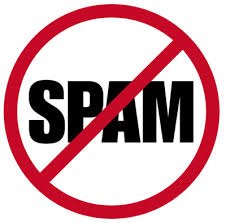 Canada’s new anti-spam legislation (CASL) is due to take effect July 1, 2014.
Canada’s new anti-spam legislation (CASL) is due to take effect July 1, 2014.
This new legislation will have broad effects on how sales and marketing activities are conducted and will cover all CEMs (Commercial Electronic Messages) including email, SMS, text and social media.
Being on the wrong side of this new legislation will have significant ramifications, with fines ranging from $1 million for an individual to $10 million for a business.
At first, as the co-founder of a B2B sales & marketing outsourcing company, I was concerned this could be a death knell to the business. However after reviewing components of the legislation and attending a number of information sessions like the one sponsored by Silicon Halton where individuals like Matthew Vernhout, the Chief Privacy Officer at Inbox Marketer spoke, I feel comfortable now that the legislation is not intended to stop business from happening. Rather, it will hopefully improve the quality of correspondence.
The information below does not contain any legal opinion, rather the summary of my notes and takeaways. For addition information on CASL please see the Government of Canada’s website.
Below are short summaries of the types of communication I feel are most applicable to enterprise B2B sales and marketing.
One-to-One Emails
The content you are sending needs to be relevant to the contact receiving it. It is okay to send sales and business development messages electronically provided they contain content that is relevant to the target contact and relates to their business function.
- E.g. Introducing a new sales CRM software to a VP of Sales would be considered onside.
- E.g. Introducing new sales CRM software to a VP of R&D could be considered offside.
Referrals provided by friends, customers and other parties (third party referrals) are allowed and can be contacted once. It does have to be noted clearly in the message who the referrer was. In addition, for all CEM’s you must include your full contact details and provide the ability to unsubscribe or be removed from the mailing list.
Social Media
The primary social media tools we use for our B2B sales and marketing efforts are Twitter and LinkedIn.
Both are deemed to be electronic messages and should fall under CASL. Both solutions have terms and conditions for being on their respective networks and there is an expectation that when you follow or connect with someone on the network, that messages can be sent. There are conflicting views in the market about what would happen with inMail on LinkedIn as this is essentially an internal network email. So, there are still some grey areas that will need to be navigated over time.
Bulk Email/Newsletter
Many marketing firms, including us, utilize bulk email items like newsletters to stay in touch with our customers, prospects and other interested parties. These are classified as CEMs and consent by the receiver will be required to send them.
For companies with existing databases, this means that those receiving the messages will have to be asked for their consent to continue receiving such messages. You in essence need to have proof of consent. For all new recipients, their consent will need to be garnered up front.
CEMs falling in this category will require the ability to “unsubscribe” and must contain the full details of the sender (name, address, phone).
When senders are requesting consent, consent for different types of electronic messages cannot be bundled together. They need to be broken up into individual consent requests.
- E.g. We would like to send you our Newsletter …check here
- E.g. We would like to share your name and email with our trusted partners… check here
These consents can fall into different categories including “Express” and “Implied”.
Express Consent
Express consent means you can send CEMs for as long as the recipient allows it, and until the recipient tells you to stop or unsubscribes. Implied consent provides you with a timeframe of approved consent to send CEMs. For existing customers (this may include firms that your have done business with in the past few years but perhaps not are current clients today) consent is implied and this consent renews every time a new transaction takes place between the parties.
Implied Consent
Implied consent will expire after a certain period of time with no commercial transactions. In addition, when looking to add customers to your mailing list through a content download, such as a whitepaper, you can no longer collect information (email and other information) without their consent. This consent can be written into the download process.
Implications for CRM
For those organizations utilizing customer relationship management solutions or sales databases, having the ability to document when a recipient has opted-in (provided consent) and downloaded items from your website will be useful in the event you are requested to provide proof. In addition, being able to identify who is a current customer and who is not would be beneficial to limit confusion and uncertainties.
The CASL legislation is wide-reaching and will attempt to prevent parties from sending spam from inside Canada, also prevent parties from sending spam into Canada from other jurisdictions (e.g. From Russia)
If you’re looking for a source of excellent sales and marketing information or need assistance with either, please don’t hesitate to contact us. For great insight into startup sales and marketing, feel free to sign up for our newsletter or follow us on Twitter.
